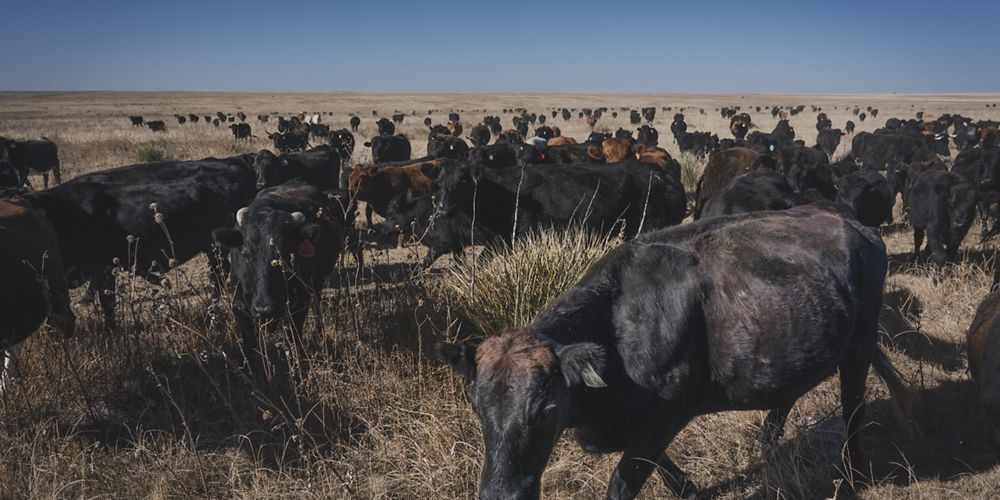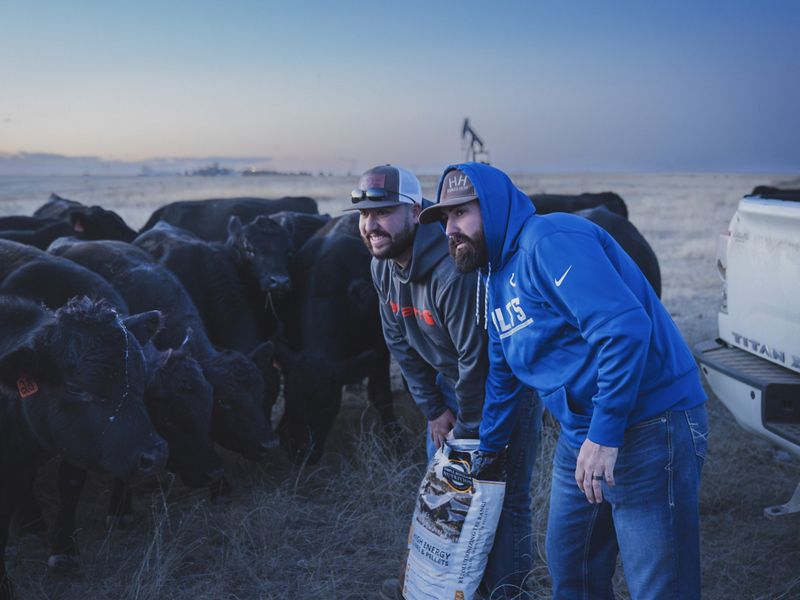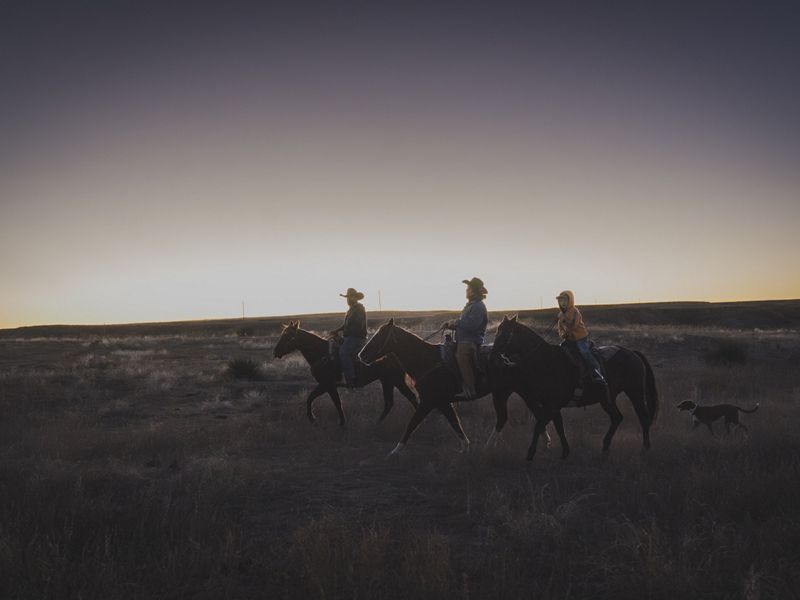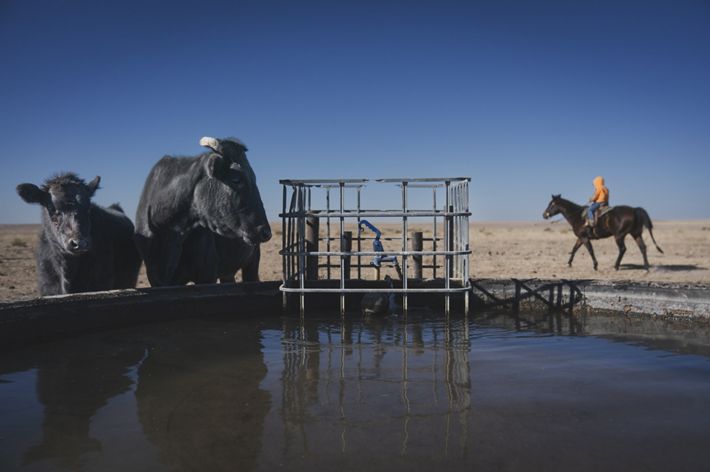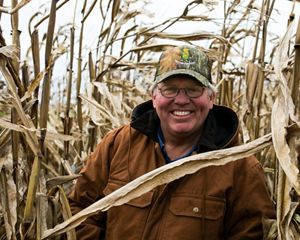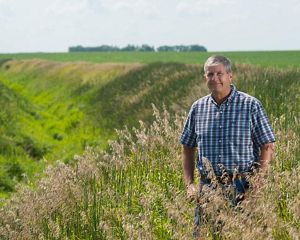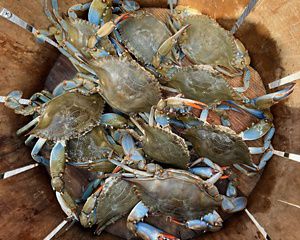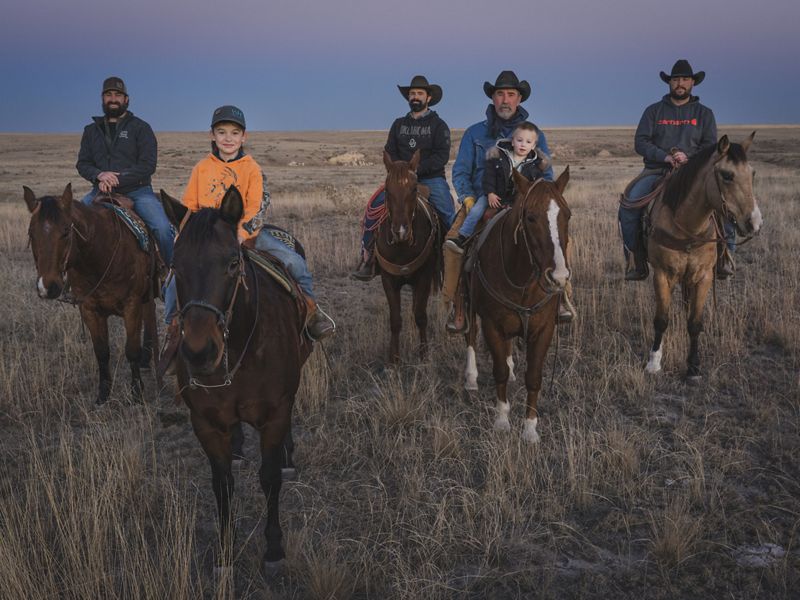
The Hatchers The men of the Hatcher family, from left Corey, Hudson, Cody, Treg, Lyle, and Casey. As the ranch is recovering from years of drought, and population booms of prairie dogs, the family has come back together to work the ranch. © Morgan Heim
Treg Hatcher is dressed for a long day of work on his cattle ranch. Well-worn leather chaps cover the front of his pant legs and a thick black scarf is wrapped around his neck, all to keep him warm during the 30-degree morning. A long-brimmed hat protects him from the bright sun, which is hard to escape from in this relatively tree-less prairie landscape. There isn’t anything comfortable he can wear to keep the dirt, being blown by the relentless wind, out of his lungs. But he’s used to that.
To some, the weather conditions are harsh. To Hatcher, they are a worthwhile price to pay for being in his happy place.
His three-by-five-mile ranch in southwestern Kansas means everything to him. It is where he works. It is where he goes to find peace. It is the gathering place for his family—including the three sons he raised there and five grandchildren who now play there. It is the place that holds so many memories from his childhood. And it is nirvana for his four dogs.
Quote: Treg Hatcher
All I’ve ever wanted is to be on this ranch and for the ranch to be part of my kids’ lives."
“All I’ve ever wanted is to be on this ranch and for the ranch to be part of my kids’ lives,” says Hatcher, 59, as he looks out to the expansive landscape.
This cowboy was devastated, therefore, when Mother Nature turned against him about 15 years ago. First, she held back the rain for a few years. The land was so dry that the grasses died off, which was devastating to the hundreds of grass-fed cattle he owned, as well as the wildlife big and small that thrive in grasslands habitat. Also, the powerful winds that western Kansas is known for, picked up the dry soil and continually whipped it into the air, making it hard for the cattle to breathe. The wind, too, blew soil and dead grasses into mounds along the fence line that became so high the cattle could walk up them and escape from the pasture.
The scene was reminiscent of the Dust Bowl that devastated Kansas and several surrounding Southern High Plains states in the 1930s. And it was hard to imagine that buffalo once roamed the land in this region, grazing on millions of acres of healthy grasses.
“All I was growing back then was dirt,” Hatcher recalls.

On top of that, prairie dogs invaded his ranch. Thousands of them moved in, digging up so many holes that an aerial Google image of the ranch depicted it as a white polka dot-looking landscape. The holes made it hard—and dangerous—for the cattle to move around the ranch.
Hatcher had hit the unwanted trifecta—holes, dead grasses and dirt mounds. He had no choice but to sell all his cattle and lease the land. But that only provided short-term financial relief. It was time to consider selling the ranch, which had been in his family since 1960. What would Hatcher do next? He had no idea. Farming or ranching had been his life, practically since day one.
A Day on the Ranch
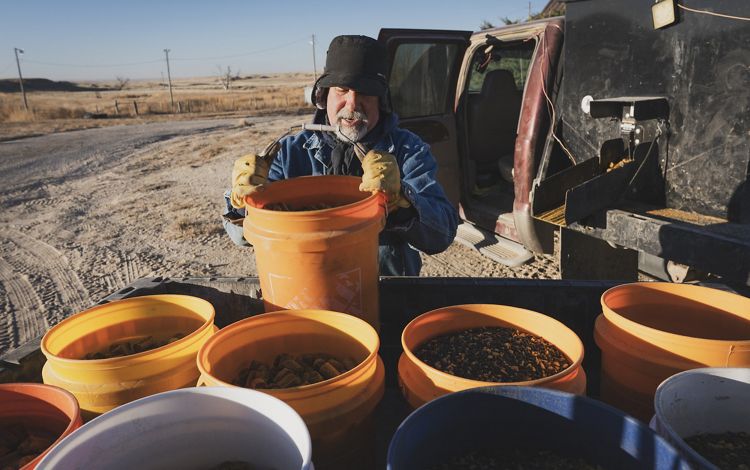
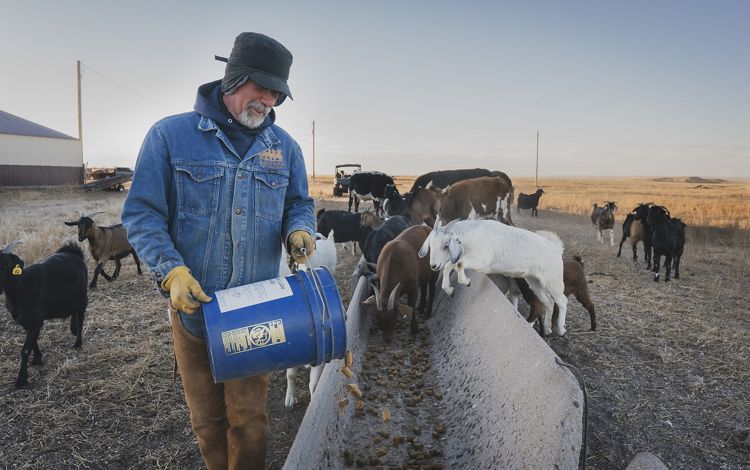
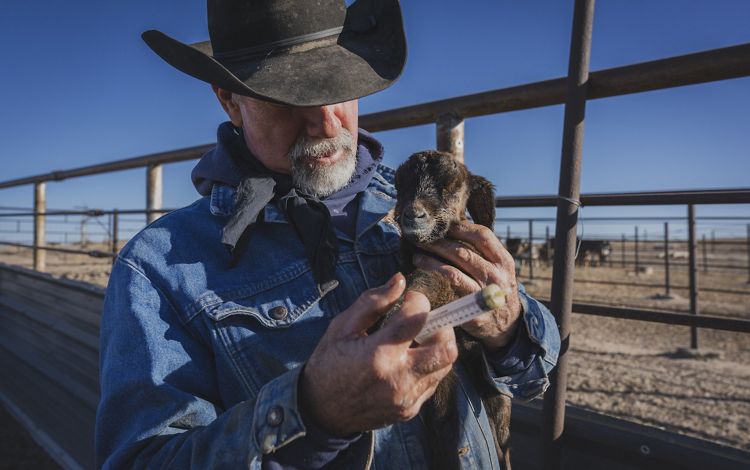
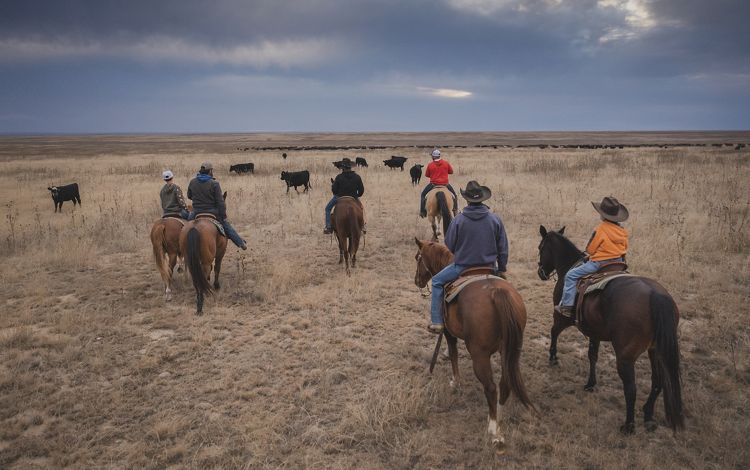
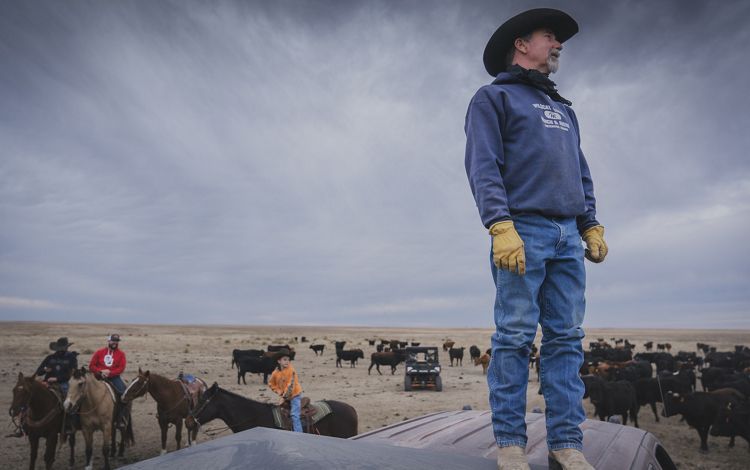
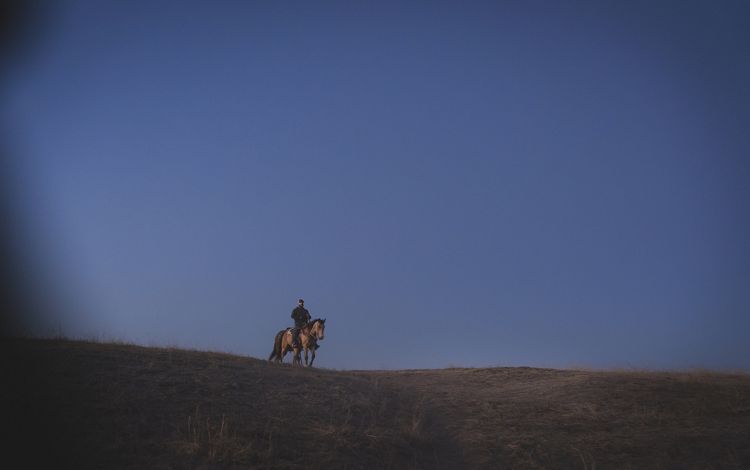
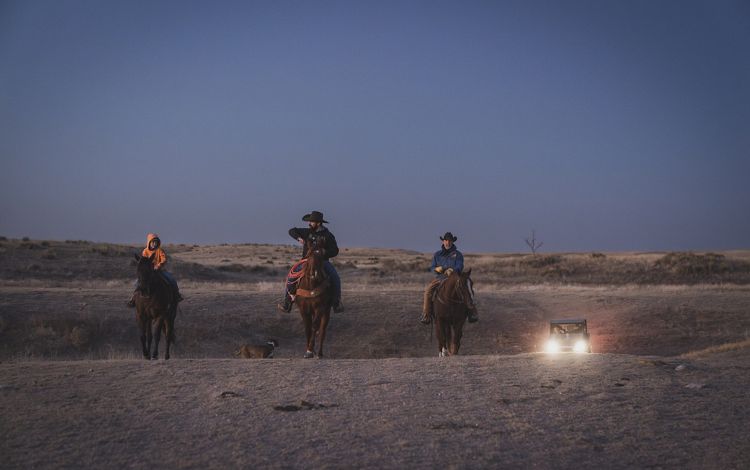
A local friend had the answer for him: talk to Ted Houser about what could be done on the ranch to turn things around. Houser was an employee of the Natural Resources Conservation Service (NRCS), an agency of the United States Department of Agriculture. NRCS is one of the entities that run programs supported by the Farm Bill, the largest source of federal funding for the conservation, restoration and management of privately-owned land. The agency provides technical and financial support to farmers, ranchers and foresters who want to be better stewards of the land.
Although skeptical at first about getting help from the government, something his family had never done, Hatcher was intrigued. He wanted to do whatever he could to hold onto his land.
Houser felt like Hatcher’s best option was NRCS’s Environmental Quality Incentives Program (EQIP), which focused on helping landowners incorporate environmentally friendly practices into their operations. Houser was particularly keen on this program because Hatcher’s ranch is in a priority area for the lesser prairie chicken, a threatened species.
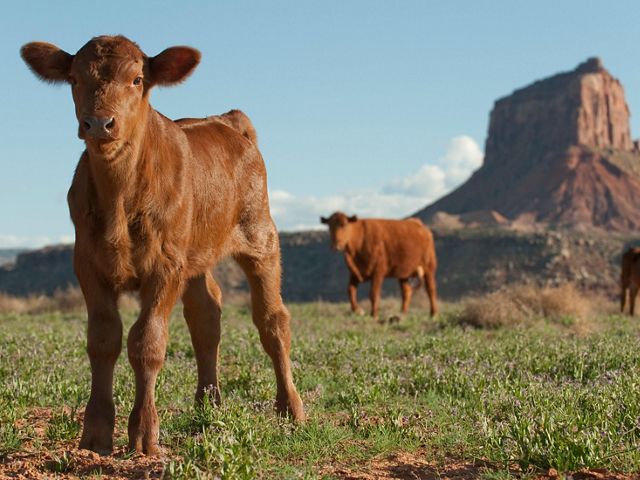
What is EQIP?
EQIP is a popular Farm Bill program and NRCS’ flagship conservation program. It helps farmers, ranchers and forest landowners integrate conservation practices into working lands. EQIP provides technical and financial assistance to producers and helps outline and implement conservation activities that address their unique natural resource concerns while improving their agricultural operations.
Within a year, Hatcher was accepted for enrollment in the EQIP program. He used funding from the program, coupled with his own dollars, to start doing more rotational grazing, which involves moving a herd of cattle to a new fenced-in area (often called a paddock) of the ranch once every 30 days or so. There are many advantages to rotational grazing, with the main one being that moving the herd gives the grass in the just-grazed paddock an opportunity to fully grow back before that land is grazed again. Another advantage is that, when the cattle is in the paddock, its movement on the land helps aerate the soil, which stimulates plant growth. Hatcher had been doing some rotational grazing on the ranch prior to EQIP. But he only had the infrastructure to create a few paddocks, which meant the cattle were only moved a few times a year—not nearly enough time for the plant roots to take hold so the grass grows back better.
EQIP helped cover half the cost of the fencing he needed to create more paddocks, as well as the water wells, pipes and tanks he needed to ensure the cattle had enough water to drink in each paddock. He was able to double the number of paddocks he had, which meant there was more time for the grass to grow back in each of the 10 paddocks. He could’ve added more cattle to his operation, but that would’ve defeated the purpose of creating a healthy pasture area.
Quote: Treg Hatcher

The EQIP program was life-changing. I felt hopeful again. It helped me get out of a bad situation.”
“The EQIP program was life-changing,” says Hatcher, adding that the skies opening and finally providing some rain was also a relief. “I felt hopeful again. It helped me get out of a bad situation.”
Hatcher was so pleased with the outcome of the EQIP program that he then applied for—and was accepted into—another Farm Bill program called the Grassland Conservation Reserve Program. This program pays farmers and ranchers a certain amount of money per acre to set aside their environmentally sensitive land for conservation benefits. They can graze the land but it has to be done in accordance with a prescribed grazing plan. Hatcher has enrolled 1,000 acres in the program.
It has been 10 years since Hatcher thought he was going to have to sell his family ranch. But now the ranch is so healthy that he can run 400 beef cattle. And there are other signs of life on the ranch again—mule deer, antelope, the lesser prairie chicken, hawks, sunflowers and milkweed, to name a few.
“The grass has never been as tall as it is now,” Hatcher says. “It’s so awesome to hear the wind blowing through it when I walk through the fields.”
The icing on the cake is that things are going so well that his three sons, all in their 30s, are sticking close to home so they can help out on the ranch and raise their own herds of cattle there—a blessing for three children who love ranching so much that they each competed in rodeo throughout college.
“Having my sons around is the greatest feeling ever,” says Hatcher.
Speak Up for Nature
Support Farm Bill Conservation Programs
The Farm Bill offers a critical lifeline to farmers, ranchers and landowners who are interested in conserving and managing their farmlands, grasslands, wetlands and forests at a time when we’re losing millions of acres of natural lands to development each year. Tell Congress: pass a Farm Bill that supports conservation.
